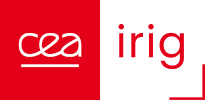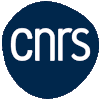Scientific highlights illustrated by key publications
- Controlling effective anisotropy for efficient switching at cryogenic temperature (October 24th, 2025)

The field of cryoelectronics holds promise for high-performance computing applications, particularly within the realm of quantum computing. Recent advances in quantum computing systems have spurred the investigation of various technologies suitable for cryogenic environments. Among ... - Imprinting of skyrmions and bimerons in an antiferromagnet (October 06th, 2025)

In this work, a consortium of physicists from SPINTEC and York addressed the challenge of nucleating quantitatively proven topological magnetic textures in compensated magnets with zero net magnetization. It paves the way for extending the ... - Monolayer control of spin-charge conversion in van der Waals Heterostructures (September 16th, 2025)

2D materials and van der Waals (vdW) heterostructures are promising candidates to build efficient THz spintronic emitters. Here, we demonstrate the drastic modification of THz spintronic emission by inserting a single layer of MoSe2 in ... - Magnetic vortex dynamics probed by time-resolved magnetic helicoidal dichroism (September 12th, 2025)

Time-resolved magnetic helicoidal dichroism (MHD) was successfully used to assess the ultra-fast dynamics of magnetization. This first attempt to use an MHD-based technique was demonstrated on a magnetic vortex structure hosted by a permalloy pacman ... - Nanosecond stochastic operation in perpendicular superparamagnetic tunnel junctions (September 08th, 2025)

Superparamagnetic tunnel junctions have emerged as promising stochastic neurons for low-energy cognitive computing. We report, for the first time, nanosecond-scale mean waiting times between magnetization reversals in perpendicularly magnetized tunnel junctions, enabled by a strong ... - Modulating TeraHertz emission using 2D materials and ferroelectricity (September 08th, 2025)

The modulation of THz spintronic emitters represents a real challenge nowadays. Here, we consider a THz emitter made of 2D materials grown by molecular beam epitaxy (MBE) on large area and transferred on LiNbO3. The ... - Topological analysis and experimental control of DW transformations in cylindrical wires (July 01st, 2025)

Topology is a powerful tool for categorizing magnetization textures by defining a topological index in both two-dimensional (2D) systems, such as thin films or curved surfaces, and in 3D bulk systems. In the emerging field ... - Large Chiral Orbital Texture and Orbital Edelstein Effect in Co/Al Heterostructure (December 20th, 2024)

The emergence of a large helical orbital texture due to the formation of the surface states at the metallic Co/Al interfaces originating from the orbital Edelstein effect and giving rise to a nonequilibrium orbital accumulation ... - Substrate softness-dependent vortex microdiscs induced cytotoxicity (December 16th, 2024)

This work focuses on the study of the intrinsic cytotoxicity of magnetic particles, developed in our laboratory for the application of local forces at the cellular level. More precisely, we were interested in the effect ... - Impact of external magnetic field on Spin Transfer Torque magnetic memory operation (December 09th, 2024)

The extent to which an external magnetic field can influence the operation of Spin-Transfer-Torque Magnetic Random Access Memory (STT-MRAM) remains a critical question within the microelectronics industry in particular regarding its use in automotive industry. ... - Development and optimization of large-scale integration of 2D material in memristors (December 05th, 2024)

Two-dimensional (2D) materials like transition metal dichalcogenides (TMD) are considered as key candidates to replace silicon in several technologies with enhanced performances. In this work, we address the two remaining challenges to reach their industrial ... - Field-Free Spin–Orbit Torque Switching in Janus Chromium Dichalcogenides (December 04th, 2024)

By performing transport simulations on carefully derived Wannier tight-binding models, Janus chromium-based transition-metal dichalcogenide (TMD) monolayers are found to exhibit a spin-orbit torque (SOT) performance comparable to the most efficient two-dimensional materials, while additionally allowing ... - Thermal noise, binary phase states and how this can be used for data encryption (October 29th, 2024)

Unbiased random bitstreams are essential for encryption, secure communication, and unconventional computing, yet true randomness without bias remains challenging in hardware. By harnessing nanoscale thermal magnetization fluctuations in spintronic nano-oscillators, the AI and RF teams ... - A dipolar core-shell perpendicular shape anisotropy memory cell (July 08th, 2024)

We propose the concept of a core-shell composite structure coupled antiparallel via dipolar interaction, as the storage layer in perpendicular-shape-anisotropy magnetic random access memory (PSA MRAM). Benefits compared with a standard PSA MRAM include a ... - Synthetic antiferromagnetic skyrmions moving at record speeds (June 24th, 2024)

Magnetic skyrmions are magnetic nanobubbles which are envisioned as bits of informations in our computers. A team from the Spintec laboratory in Grenoble has demonstrated that they can be moved by electric current at ...




